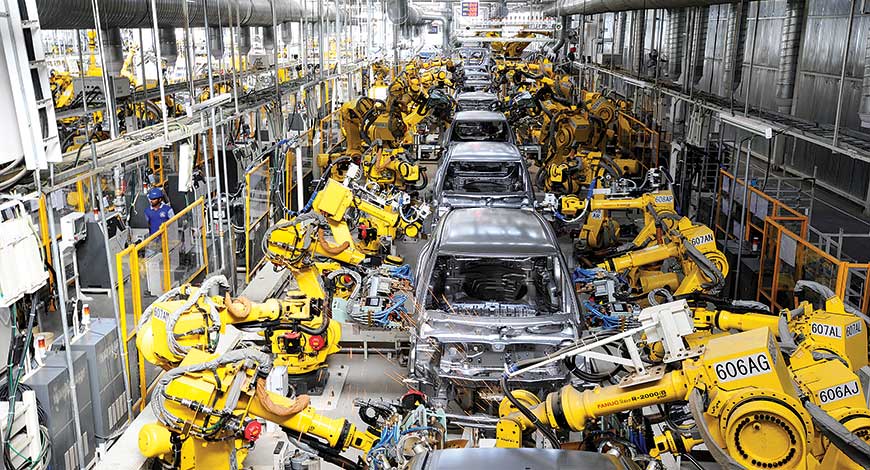An Overview Of The Fasteners Used In The Automotive Industry
Posted on June 18, 2021 at 03:30 PM

As a project manager or expert, it is critical that you get familiar with all of the specifics of fasteners used in automobile assembly, as well as how much force should be used. The relevant data on fixing, on the other hand, is startlingly few - this is an important aspect of automobile affixing that demands additional illumination. The fundamentals of screw use and fastener repair necessitate a comprehensive study. Steel Sales Company provides the most comprehensive collection of fasteners.
In The Automobile Industry, What Kind Of Fasteners Are Required?
Nuts, fasteners, and washers are the types of fasteners used in automobiles. Nuts use inner female stringing to secure the attachment of fasteners and screws to a particular surface. Jolts are commonly strung with pins and bars, are represented by heads, and are used to build the wheel. Washers in automobiles are typically small, level rings with holes in the centre. They are used to contain a few automobile jolts in order to prevent leakage, dissipate pressure, and protect radiators.
Plastic fasteners, which are commonly made of vinyl, are made using an infusion forming process, whereas metal fasteners are usually cold-worked and heat-treated to improve quality, snugness, and strength. Treated steel is highly regarded as a material for automobile fasteners due to its high quality and resistance to corrosion.
Because changing climate conditions cause vehicle parts to corrode on a regular basis, consumption resistance is an important element to consider when selecting fastening materials. Titanium is one of the most reliable fastening materials for cars; nevertheless, its use is often limited to aircraft fastener applications.
The Most Important Concern That Must Be Addressed
The Hex head fastener is unquestionably the most well-known type of fastener used in the automotive industry, closely followed by the hex-headed bolt and the stud. Studs are a combination of a screw and a fastener. If any of the fasteners go loose, the owner will most likely have problems with his/her vehicle. A loose screw in the motor or transmission zone, for example, might prevent the car from starting, just as a weak fastener in the suspension or slowing mechanism can result in extremely dangerous situations such as accidents and collisions.
Appropriate Tightening Safeguards Your Application Against Risks
You should ensure that the head screws in the fundamental areas are held together by a greater amount of pressure than the fastener's heap limit. The joints should be well bonded; a lack of joint pressure will result in a combination of power and vibration, which will only serve to slacken the jolt. On the other hand, too much pressure might damage the fastener. It's now more important than ever to establish some type of balance.
Are The Terms 'tightening' And 'torque' Interchangeable?
The answer is a resounding nay. When we use the term "fixing" in relation to fastener applications, we're referring to the force delivered to the pieces tightened by the jolt. The fastener expands as the expansion creates enough tension to hold the car's segments together.Force, on the other hand, refers to the imparted rotational force; the screw pivots, and the resulting strain keeps the assembly together.
What Effect Does The Tension Caused By Torque Have?
Experts should consider a number of factors in order to get the ideal level of tension caused by snugness. Most essential, a little of lubricant allows the jolt to deliver the proper measure of pressure when the force reflects the fastener's protection against revolution.
The presentation of a solidified washer is an often overlooked component that enhances the fastener's capacity to provide appropriate pressure. This smooths the pivot; nevertheless, you must guarantee that the jolt does not come free any faster.
The automobile industry employs a diverse range of machine parts. Fasteners, nuts, fasteners, screws, couplings, bushings, fittings, spines, and additions are all examples of fasteners, nuts, fasteners, and screws. All were used in the gathering to cycle for a variety of vehicles. They are most commonly used for locking and spinning purposes. Norwood Screw Machine is a leading manufacturer of high-quality automotive machine components. There are a few areas in the automotive industry where fasteners are quite important. These are the areas where you can utilise them:
Inside:
Machine parts are used in a wide range of car interior elements. Windshield wipers, pressure-driven steering, power windows, power seats, electronic hand brakes, wing mirror adjustments, and rigging worms
Exterior Trim:
Bolts, nuts, and fasteners are extensively used on a vehicle's outside trim to create the vehicle's overall appearance. Machine parts are required for guards, grills, body armour, outside handles, and side mirrors.Body:
Different elements of cars, such as outlines, hoods, rear ends, entryways, truck box sidewalls, brake drums, rotors, and flywheels, all require the use of car fasteners to keep them in place.Gathering System:
Our vehicle fastener is required for various body structure congregations and sub-gatherings. Our fasteners, nuts, and screws are required for sunroof gathering, liftgate entryways, and convertible tops.